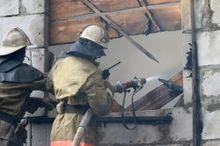How are Items Restored After Suffering Fire Damage?

Fires are devastating disasters that often leave wreckage in their wake. To reduce the damage, homeowners must act quickly by contacting a fire damage repair service that can clean and restore salvageable items. Below is a comprehensive guide to how the fire damage repair process works and why it requires a professional.
Cleaning
Different cleaning techniques are utilized depending on the type of fire and the amount of residue. High-oxygen fires leave dry soot, which is why sponges and low-alkali detergents must be used for hand cleanup of doors and walls. In contrast, low-oxygen fires leave a wet residue, which requires a mixture of high-alkali detergents and warm water. Other techniques such as power washing and ice blasting are used for heavier deposits.
Drying
 Wet items must be dried as soon as possible to prevent irreversible damage and the growth of mold. Fans and dehumidifiers are turned on so the moisture will evaporate, while all wet items are removed to help them dry quicker. A water extractor or wet vacuum might be used for carpets and upholstery.
Wet items must be dried as soon as possible to prevent irreversible damage and the growth of mold. Fans and dehumidifiers are turned on so the moisture will evaporate, while all wet items are removed to help them dry quicker. A water extractor or wet vacuum might be used for carpets and upholstery.
Removing Soot
Soot can cause damage to the lungs and skin, which is why the right equipment and uniforms must be worn. Fire damage repair technicians are equipped with specialized vacuums designed with filters to remove all soot particles. Any remaining soot deposits can then be scrubbed off using a wet sponge.
If you’re seeking a fire damage repair service that can help you restore your possessions after sustaining a fire, turn to the team at SERVPRO of Greater St. Augustine / St. Augustine Beach in Saint Augustine, FL. This locally owned and operated business is known for its residential and commercial cleanup and restoration services. From water damage and mold to storm and fire damage, you can count on their experts for thorough results. Call (904) 429-4457 to schedule an appointment or visit them online to learn more about their services.
About the Business
Have a question? Ask the experts!
Send your question

